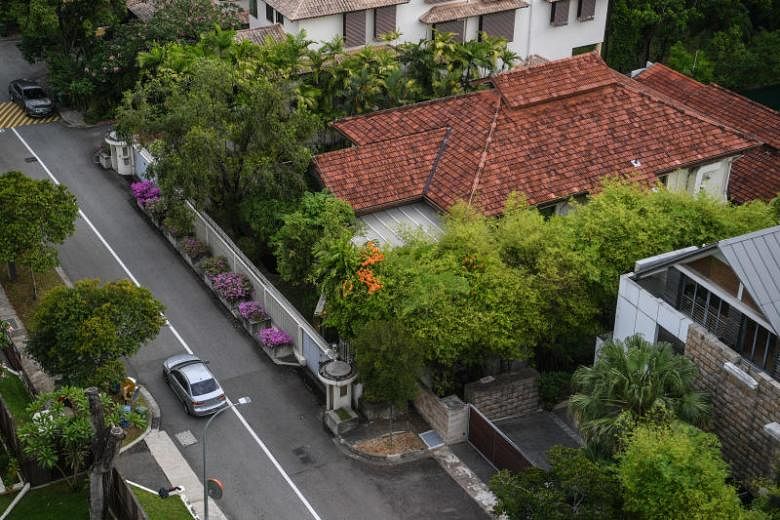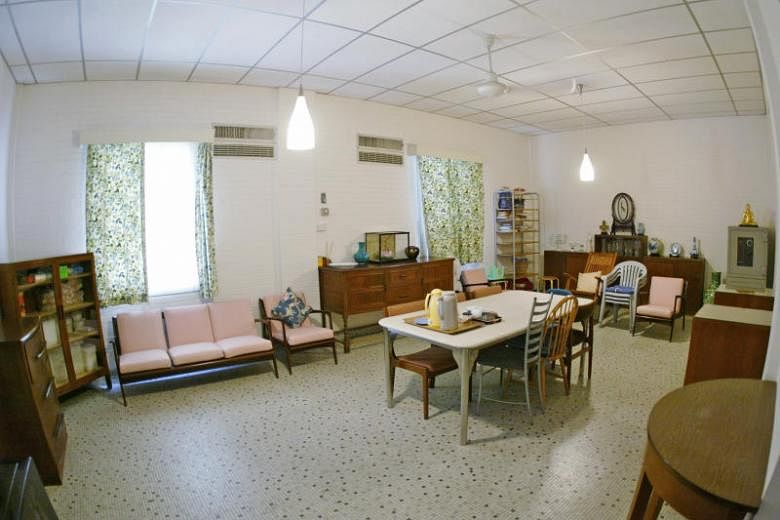SINGAPORE - In its basement, some of the most important discussions on the future of Singapore were held in the 1950s.
Now, the question is: Will the house at 38, Oxley Road survive its famous owner, Minister Mentor Lee Kuan Yew
Broaching the subject was Mr Lee himself, during an interview with a team of Straits Times journalists for the book, Hard Truths, to be launched today.
When the conversation veered to his home, which he has described as "a big, rambling house with five bedrooms, and three others at the back originally used as servants' quarters", he said: "I've told the Cabinet, when I'm dead, demolish it."
His reason?
"I've seen other houses, Nehru's, Shakespeare's. They become a shambles after a while. People trudge through. Because of my house the neighbouring houses cannot build high. Now demolish my house and change the planning rules, go up, the land value will go up," he said.
The houses of India's first prime minister Jawaharlal Nehru and English playwright William Shakespeare have been preserved in India and England.
Mr Lee was asked about the need to preserve Singapore's heritage. After all, his house was host to meetings that led to the inauguration of the People's Action Party (PAP) in November 1954.
Details are scarce, but according to the book Men In White: The Untold Story Of Singapore's Ruling Political Party, the Oxley Road circle started meeting in the basement in late 1954, usually between 2.30 and 5.30 on Saturday afternoons.
Mr Lee kept minutes during the meetings which were chaired by Dr Toh Chin Chye, who eventually became the party's first chairman. Some 20 participants, including the 14 founding members of the PAP, would engage in heated debate around a long table.
Talks initially revolved around whether the group should form a party of its own or attempt to capture the Labour Party.
Later, the group moved on to issues related to PAP's formation: its name, its symbol and what it stood for.
The house was built more than a century ago by a Jewish merchant and has been Mr Lee's home since the 1940s.
Due to security concerns, he and his family moved to the Istana for a few weeks after Singapore became independent in 1965. Aside from that period, he has lived throughout in Oxley Road and still lives there today.
The house was also where his children - current prime minister Lee Hsien Loong and his siblings Hsien Yang and Wei Ling - grew up.
Mr Lee told the journalists it would cost too much to conserve and maintain the house. Already, there are cracks on the wall, though the pillars are sound.
"I don't think my daughter or my wife or I, who lived in it, or my sons who grew up in it, will bemoan its loss. They have old photos to remind them of the past," he said.
But some Singaporeans think otherwise.
Mr Tan Szue Hann, architecture editor of Singapore Architect magazine, said: "From a heritage viewpoint, it should perhaps be conserved by virtue of its high historical significance.
"After all, it is the residence of the architect of modern Singapore, and back in the day, it hosted meetings that shaped the Singapore that the world has come to recognise and admire."
Mr Ho Weng Hin, partner of architectural conservation consultancy Studio Lapis, however, said whether or not a historic residence is conserved is the outcome of society's wishes, the authority's evaluation and the owner's preference. He added: "Some owners may not want their private space intruded upon."
Or should the litmus test be whether the public attaches significance to the house?
On this, Mr Ong Keng Yong, director of the Institute of Policy Studies, noted: "The only way to find out is to ask the people of Singapore, possibly through a poll. If they think it should be conserved, the government of the day should bear the cost of maintaining it."


